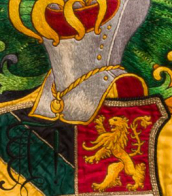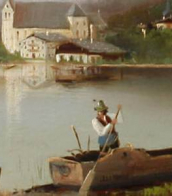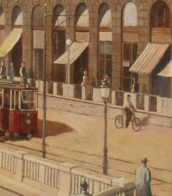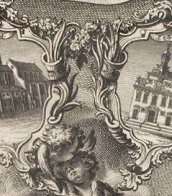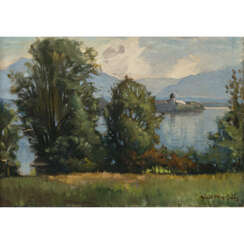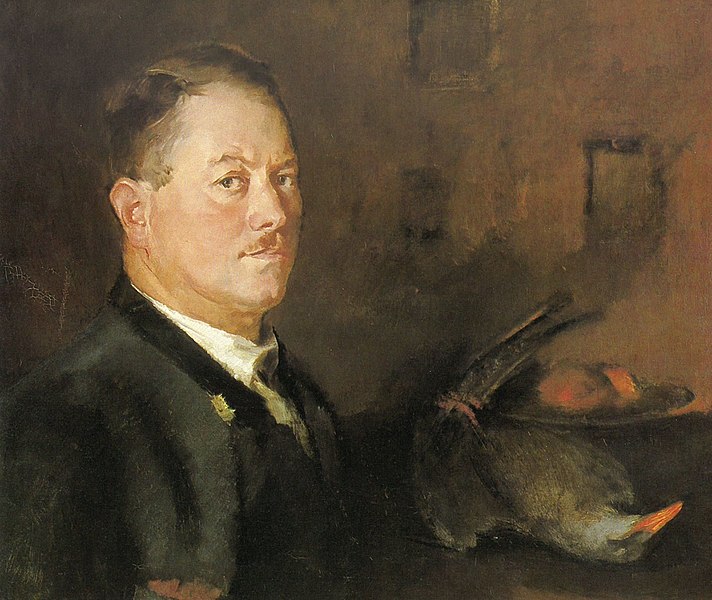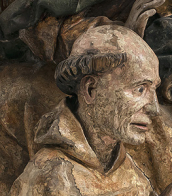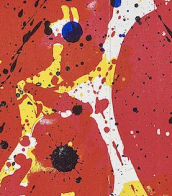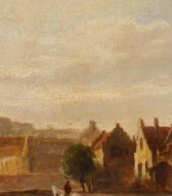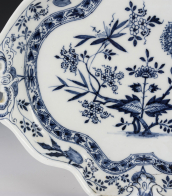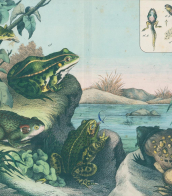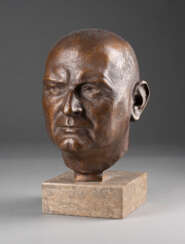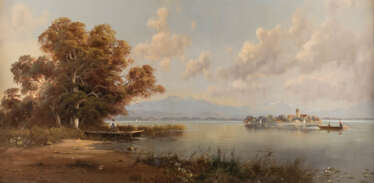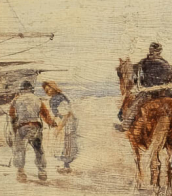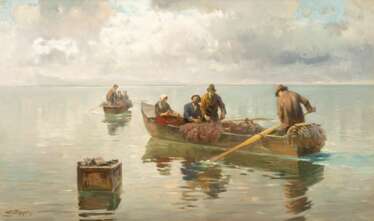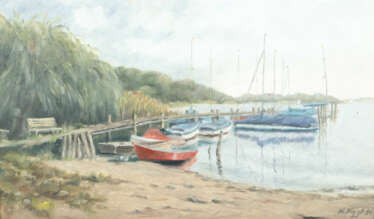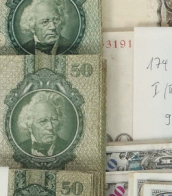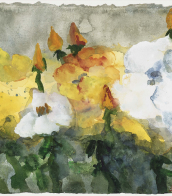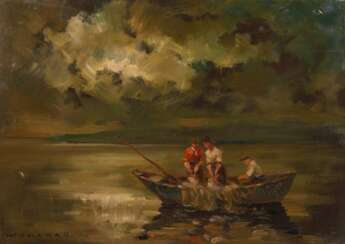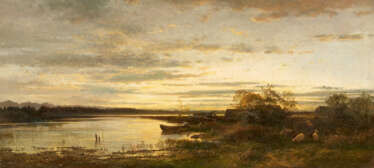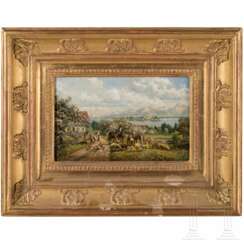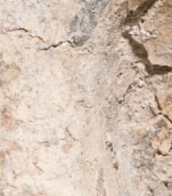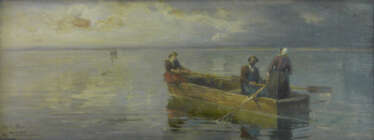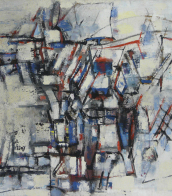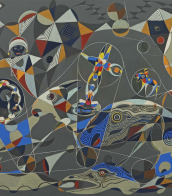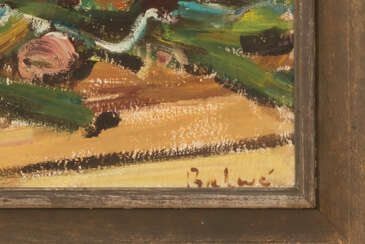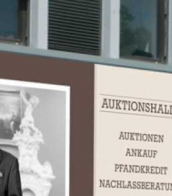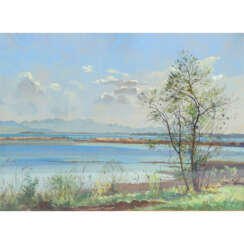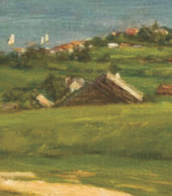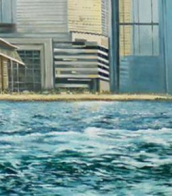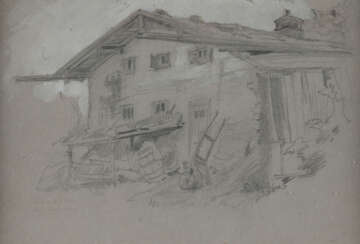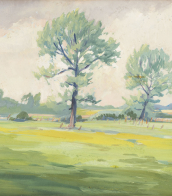chiemsee
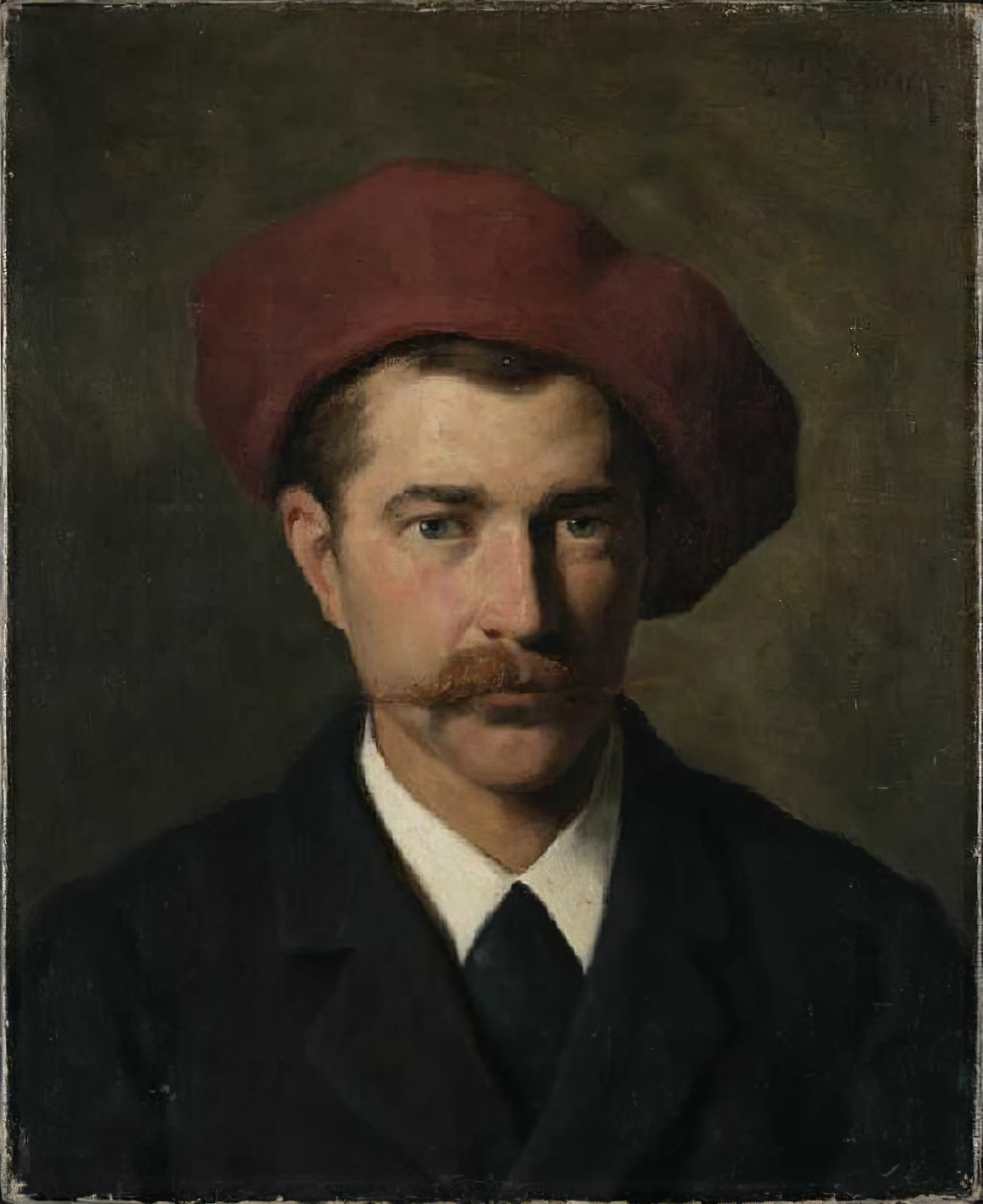
Josef Wopfner was a German landscape painter who worked in the second half of the 19th and early 20th centuries in the Impressionist style. He was a master of landscape and genre painting.

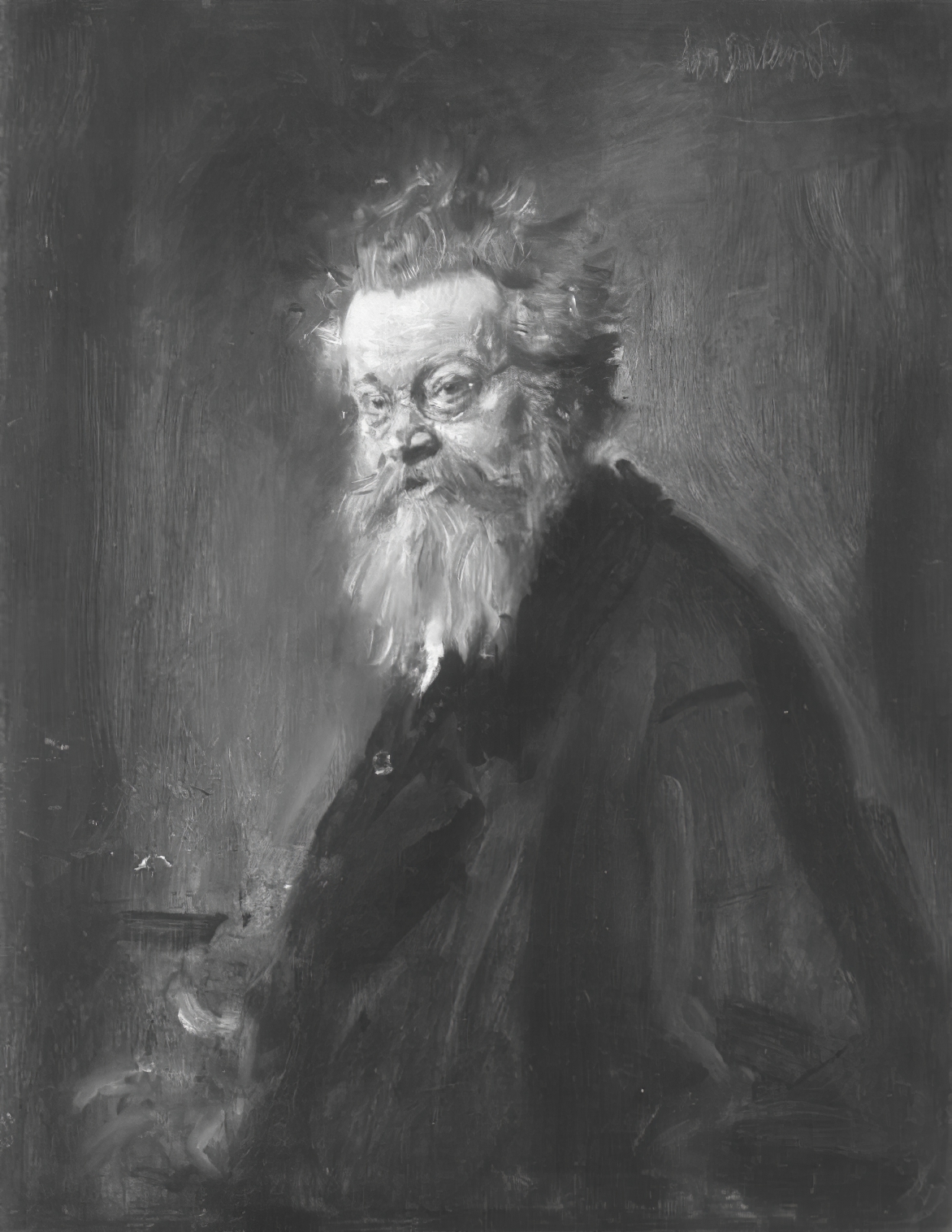
Joseph Wenglein was a German painter who is often referred to as one of the last significant landscape painters of the 19th century Munich school.
Parallel to his law studies Joseph Wenglein studied at the Academy of Fine Arts in Munich. He then switched entirely to art and became a pupil of the landscape painter Johann Gottfried Steffan. On his recommendation, Wenglein sometime later became a pupil of the painter Adolf Heinrich Lier, whose colouristic tendencies, calculated to express profound moods, particularly appealed to him.
Josef Wenglein knew how to reproduce the change of daylight, especially in spring and autumn, with a fine sense of the slightest atmospheric fluctuations and to vary the grey pleasant tone of the Bavarian plateau in all its nuances masterfully.

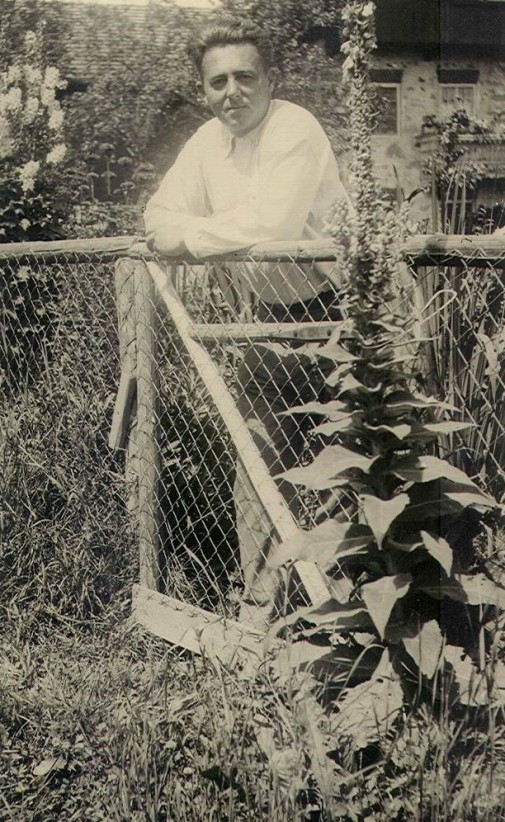
Arnold Balwé was a German post-impressionist painter.
He studied at the Antwerp Academy of Art and the Academy of Fine Arts in Munich, traveled extensively and painted landscapes he saw. Balwe's work is characterized by color intensity and vitality.

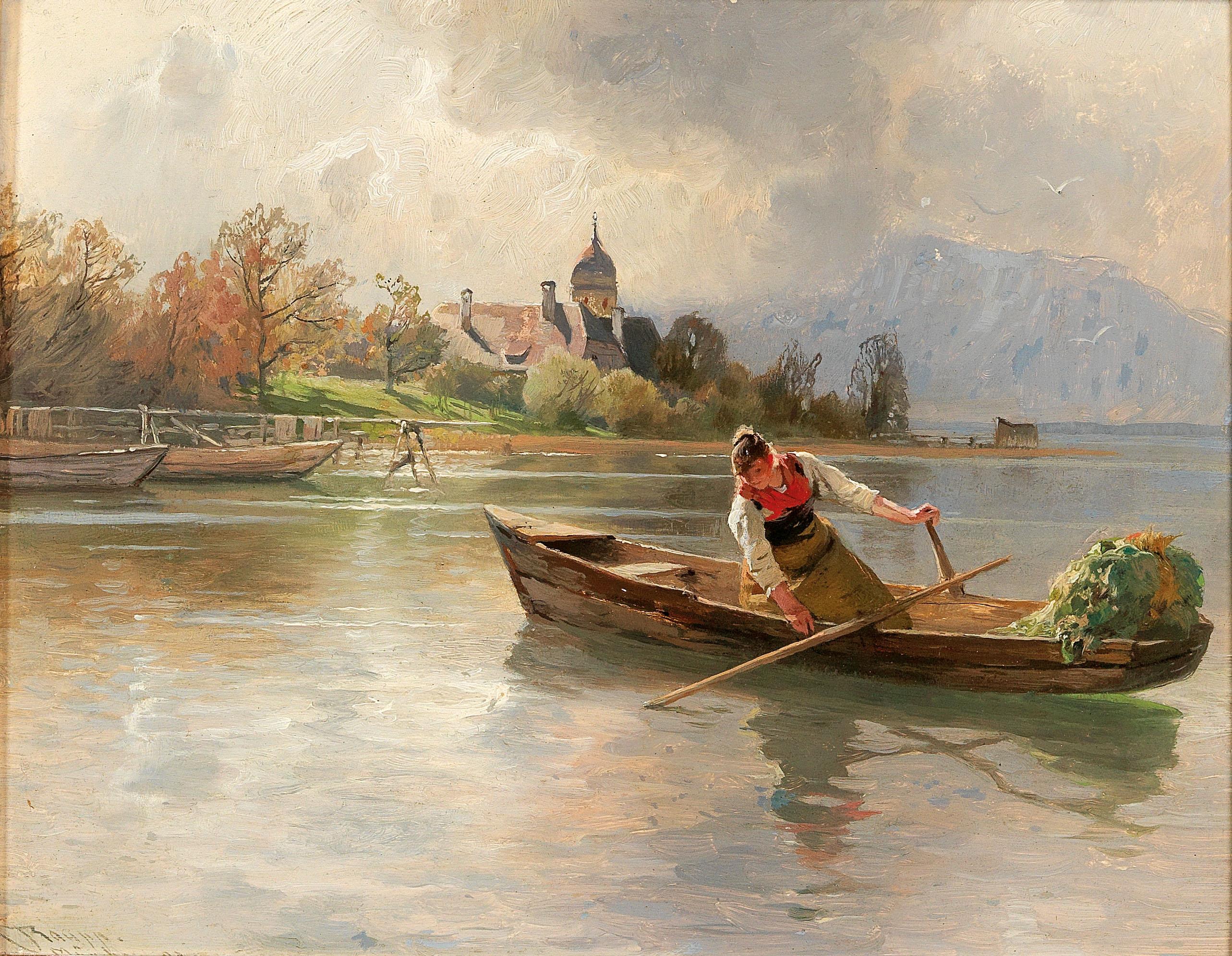
Karl Raupp was a German painter of the last third of the nineteenth and early twentieth centuries. He is known as a painter and graphic artist.
Karl Raupp worked primarily in landscape and genre painting. He often depicted the fishermen of Lake Kimsee and the peasants of Upper Bavaria. His work is characterized by his ability to subtly convey color and the play of light.
Raupp founded an artists' colony on the island of Fraueninsel on Lake Kimsee and also wrote a painting textbook.

